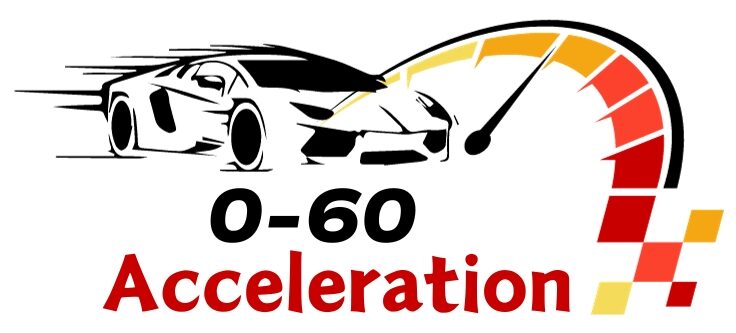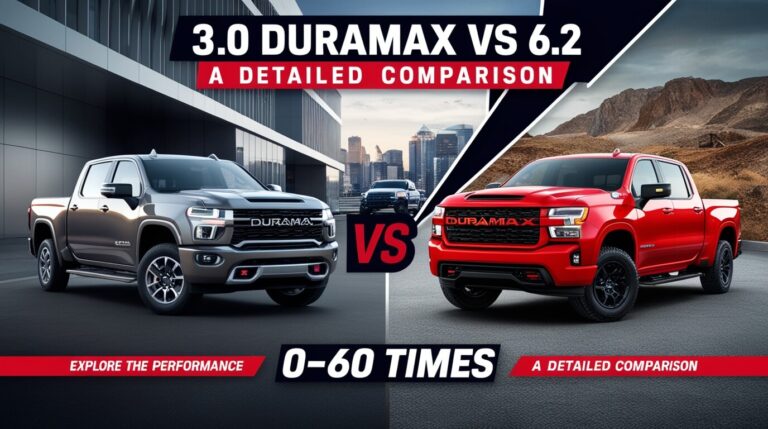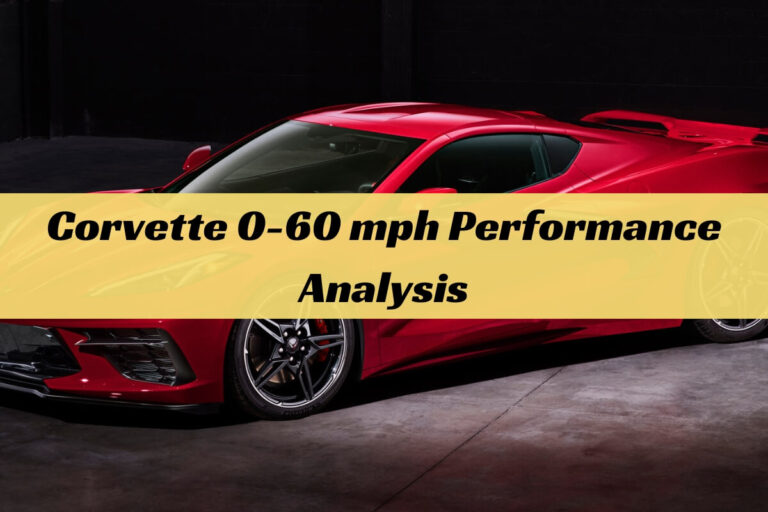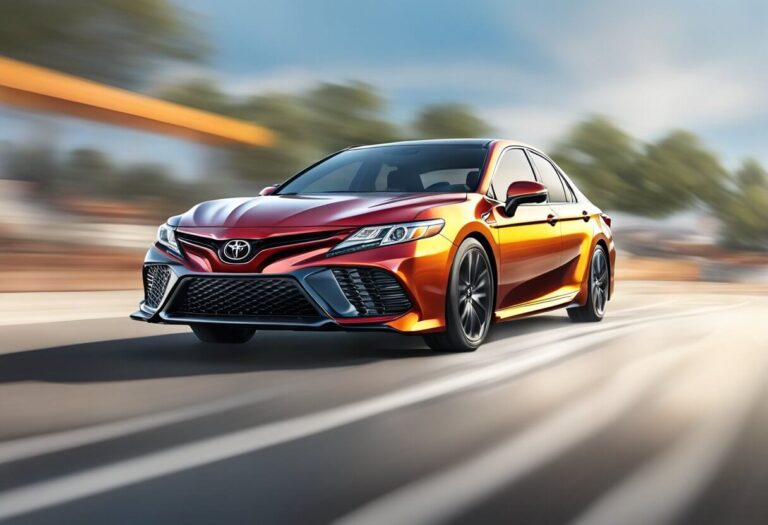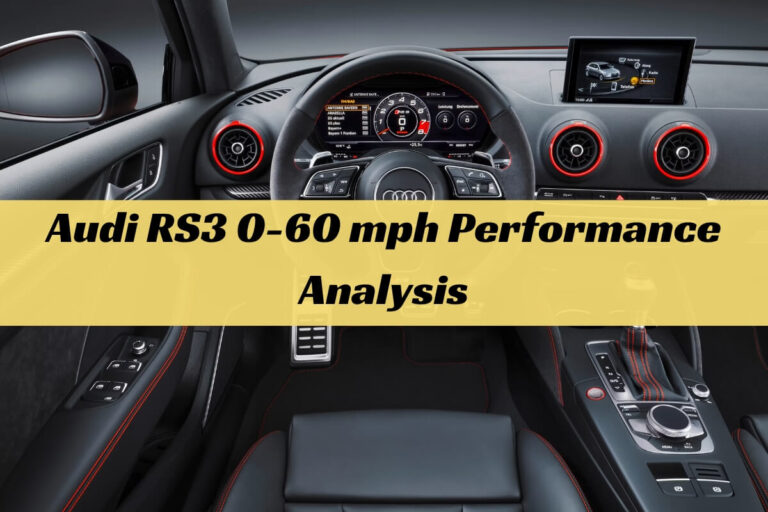
The Chevrolet Silverado is a well-known name in the truck world, popular for its durability, performance, and versatility. Two of its engine options, the 2.7L Turbo and the 5.3L V8, often come up in discussions among potential buyers. These engines offer different advantages, from fuel efficiency to towing power. This article explores how these two engines compare, particularly in their 0-60 mph acceleration, fuel economy, towing capabilities, and more. Whether you’re deciding between these engines for work, recreation, or daily driving, understanding their nuances can help you make an informed choice.
Overview of the Silverado 2.7L Turbo and 5.3L V8 Engines
Silverado 2.7L Turbo
The 2.7L Turbo engine is a modern four-cylinder option designed to offer a balance between power and efficiency. It produces approximately 310 horsepower and 430 lb-ft of torque. This engine is turbocharged, which means it can deliver strong performance despite its smaller size compared to traditional V8s.
Silverado 5.3L V8
On the other hand, the 5.3L V8 is a classic choice for those who prioritize power and a traditional V8 feel. With around 355 horsepower and 383 lb-ft of torque, this engine is a naturally aspirated V8, known for its smooth power delivery and robust performance.
Performance Metrics
Horsepower and Torque
Horsepower and torque are crucial for understanding an engine’s capability. The 2.7L Turbo’s 310 hp and 430 lb-ft of torque make it a strong performer, particularly for its size. The 5.3L V8, with 355 hp and 383 lb-ft of torque, offers more traditional V8 power, which can be advantageous in towing and hauling scenarios.
0-60 MPH Times
Acceleration from 0 to 60 mph is a common benchmark for comparing vehicles. The 2.7L Turbo achieves this in about 7 seconds, which is respectable for a truck of its size. The 5.3L V8 is quicker, with times ranging from 6.1 to 6.6 seconds, depending on the configuration. This quicker acceleration can be a decisive factor for those who need swift response times for merging onto highways or overtaking.
Fuel Efficiency and Cost
Fuel Economy Ratings
Fuel efficiency is a significant consideration for many truck buyers, especially given rising fuel costs. The 2.7L Turbo offers an estimated 19/22 MPG city/highway, which is quite efficient for a full-size truck. The 5.3L V8, being larger and naturally aspirated, provides around 15-16 MPG in the city and 20-22 MPG on the highway. While the V8 offers more power, it comes at the cost of higher fuel consumption.
Annual Fuel Costs
Calculating annual fuel costs helps in understanding the long-term expenses associated with each engine. For instance, driving 15,000 miles annually with the 2.7L Turbo would cost less in fuel compared to the 5.3L V8, assuming similar driving conditions and fuel prices. This difference can amount to several hundred dollars per year, adding up significantly over the life of the vehicle.
Towing and Payload Capacities
Towing Capacity
Towing capacity is a critical factor for many truck buyers, especially those who use their vehicles for work or recreation. The 2.7L Turbo can tow up to 9,500 lbs, making it suitable for most standard towing needs. However, the 5.3L V8 outperforms with a towing capacity of up to 11,300 lbs, catering to those who need to haul heavier loads, such as trailers or boats.
Payload Capacity
Payload capacity, which measures how much weight a truck can carry in its bed, also varies between these engines. The 5.3L V8 generally offers a higher payload capacity, which can be crucial for those who frequently transport heavy equipment or materials.
Real-World Usage Scenarios
Daily Driving Experience
In daily driving, the 2.7L Turbo’s smaller size can offer better maneuverability and slightly better fuel efficiency, which is advantageous in urban settings. The 5.3L V8, while larger and potentially less fuel-efficient, provides a more robust driving experience with a traditional V8 sound and feel.
Long-Term Reliability and Maintenance
Reliability and maintenance costs are important considerations. The 5.3L V8 has a long track record, and parts are widely available, potentially making maintenance easier and cheaper. The 2.7L Turbo, being a newer engine, may have less available data on long-term reliability, but it often comes with modern engineering improvements.
Cost of Ownership and Resale Value
Initial Purchase Price
The initial purchase price can vary significantly between these engines, especially when considering different trims and features. Typically, the 2.7L Turbo is available at a lower starting price, which might appeal to budget-conscious buyers.
Depreciation and Resale Value
Depreciation and resale value are crucial for those looking at the long-term financial aspects of truck ownership. Historically, V8 engines like the 5.3L tend to hold their value better, possibly due to a broader appeal among buyers. However, the growing interest in fuel efficiency might boost the resale value of the 2.7L Turbo over time.
Conclusion
Choosing between the Silverado 2.7L Turbo and 5.3L V8 involves balancing various factors like power, fuel efficiency, towing capacity, and overall cost. The 2.7L Turbo offers a modern, efficient choice with good power, making it suitable for urban driving and moderate towing needs. The 5.3L V8 provides traditional V8 power and higher towing capacity, ideal for those requiring more muscle for heavy-duty tasks. Ultimately, the best choice depends on your specific needs, whether they prioritize fuel efficiency, power, or cost-effectiveness. With a deeper understanding of these engines, you can make a more informed decision that suits your lifestyle and driving habits.
